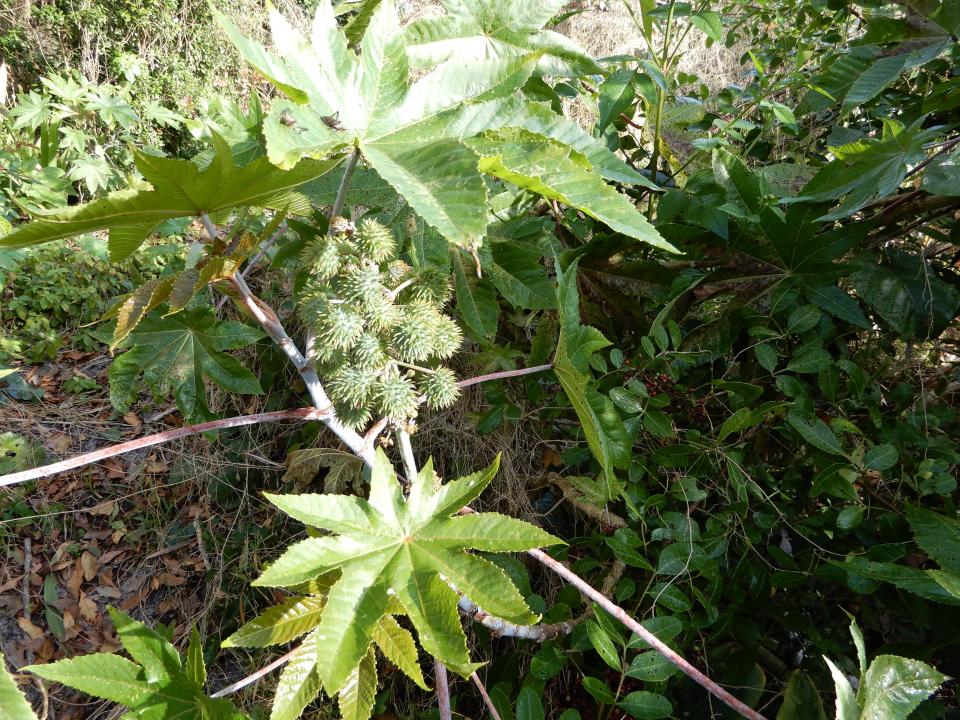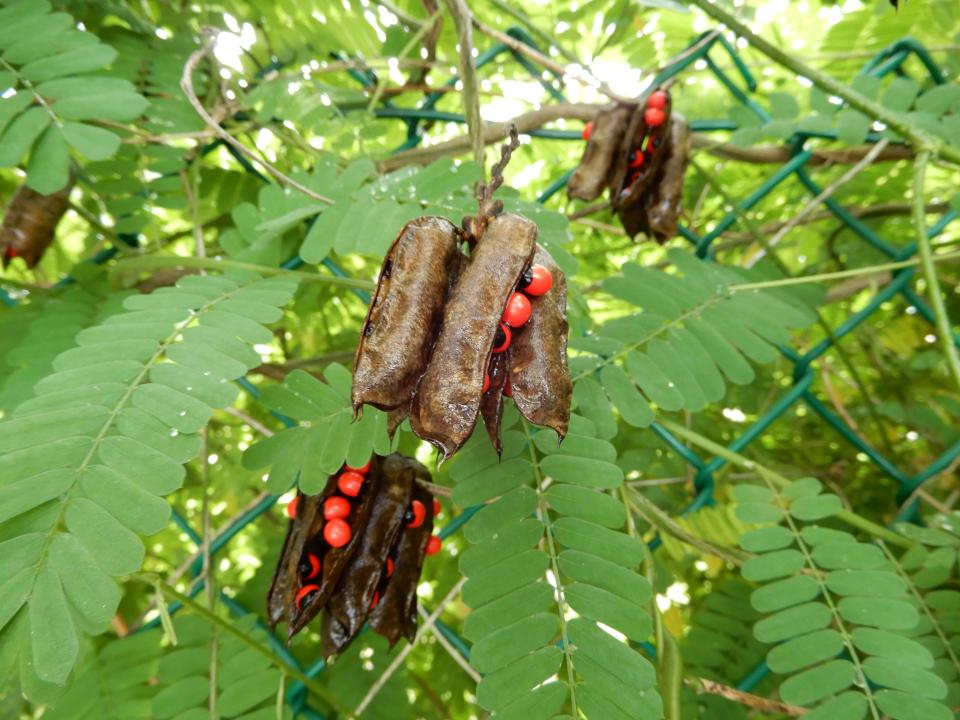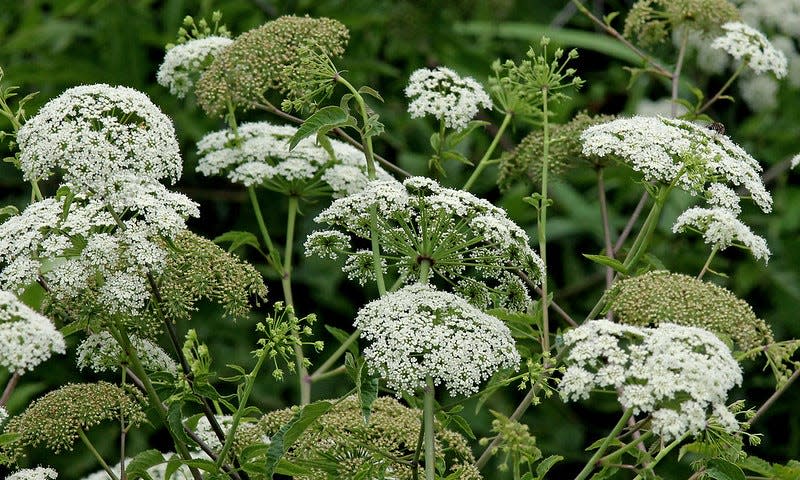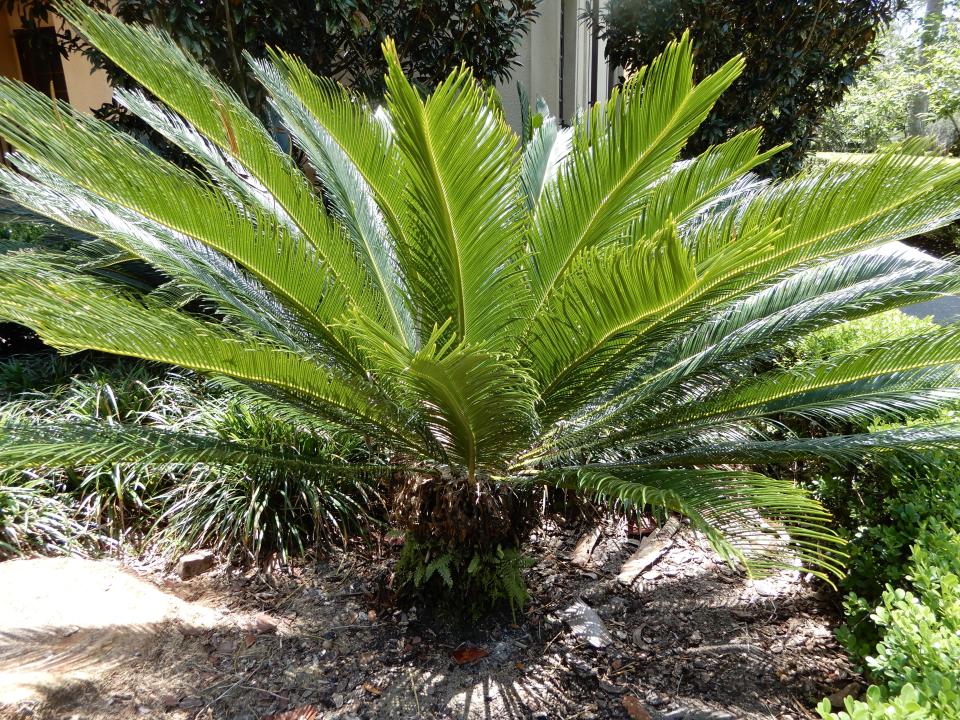What are Florida's poisonous plants? Expert botanist tells you what to watch out for in Q&A
The News-Press and Naples Daily News recently connected with Marc S. Frank, an Extension Botanist and Assistant Collection Manager at the University of Florida's Herbarium at the Florida Museum of Natural History.
Our mission? To find out from Frank as much information as we could about Florida's poisonous plants − poisonous to humans and poisonous to pets and other animals.
The following Q&A not only taps into Frank's expertise as a botanist, but he also provides more depth and context about this fascinating subject, something that anyone living in the Sunshine State should have a better understanding of whether it is a plant growing in their backyard or plant they encounter on a nature trail.
More: Man fishing on Sanibel beach reeled in a fish he described as 'prehistoric' looking
Of the six most common and widespread plants you provide details about in your blog from 2021, which ones would you steer away from the most and why?
FRANK: In addition to be being highly toxic, both rosary pea and castor bean are invasive, which means they often escape to natural areas, displacing native species and disrupting the ecology of natural habitats. Furthermore, both produce large numbers of attractive seeds that might be tempting for young children to eat.
READ THE BLOG: Marc S. Frank's "Poisonous plants in your Florida garden: Six deadly species to know
Are any of these six poisonous plants in the nursery at Home Depot or Lowes?
FRANK: Oleander and king sago are commonly sold in Florida garden centers, and the rhizomes (tuber-like underground stems) of gloriosa lily are occasionally sold along with other garden bulbs.
How many of those Florida poisonous plants are invasive?
FRANK: Only spotted water hemlock is native to Florida. The other five species are introduced from tropical to subtropical parts of the Eastern Hemisphere. Among the five non-native species, three (rosary pea, castor bean and gloriosa lily) are considered invasive. Oleander and sago palm may rarely escape from cultivation and become established in the wild in the Florida, but they are not currently considered invasive by the UF/IFAS Assessment of Non-Native Species in Florida’s Natural Areas.

Where did the invasive Florida poisonous plants come from?
FRANK: All three of the invasive species were intentionally introduced as garden ornamentals, and then subsequently escaped to natural areas in Florida and became invasive. Castor bean originated in northeastern Africa, gloriosa lily comes from both Africa and Asia, and rosary pea is native to a broad swath of tropical to subtropical Africa, Asia and Australia.
Rosary pea poses such an invasive threat that it is regulated as a noxious weed by the Florida Department of Agriculture, Division of Plant Industry, which means that nurseries cannot sell it.
Nonetheless, it is well-established in the wild and on disturbed sites throughout peninsular Florida; birds consume and disperse the seeds.
Do you have an expectation that more invasive poisonous plants could take root in Florida in the future?
FRANK: Unfortunately, yes! Florida has a large horticulture industry, and new plant introductions are a key part of what drives sales. Unless we systematically evaluate risk of plant species beforehand, there is a good possibility that more potentially invasive and/or poisonous plants will be introduced.
I understand animals not knowing better, but in regard to humans, based on your knowledge, what leads them to getting sick? I would presume hikers out in the while who think it's OK to eat a particular plant? What else?
FRANK: Toddlers often explore the world around them by putting things in their mouths, and this can lead to accidental poisoning. And slightly older kids might consume potentially toxic fruit or leaves while playing outdoors, such as when having a tea party in the garden.
Foraging for plants in the wild seems to be increasingly popular. Often foragers will see birds or other wildlife eating a plant and mistakenly assume that it’s safe for humans to consume. Also, there are quite a few plant lookalikes, so foragers need to be educated on how to distinguish edible plants from superficially similar plants that are poisonous.
Occasionally home gardeners get confused on plants in their gardens, or purchase or are given plants that are not accurately identified, and this can lead to accidental poisoning.
Oleander stems contain toxins, so folks have been poisoned by using cut stems as barbeque skewers or stirring sticks. There are even cases of people being poisoned from burning oleander branches and breathing the smoke.
Remember that plant poisoning doesn’t just refer to getting sick from eating a plant, but also includes skin irritation resulting from exposure to plant saps, spines, irritant hairs, etc. Skin irritation is probably the most common form of plant poisoning in the state but is clinically under-reported, except for the most extreme cases. There probably isn’t a gardener in Florida who hasn’t experienced dermatitis as a result of handling some plant!

More: Our photographer fulfills his mission by tracking down the rarely seen American flamingo
To your knowledge, has any human died in Florida from plant toxins? Or, has there ever been a widespread issue with livestock? Pets?
FRANK: I don’t have access to data on human mortality from plant poisoning in Florida, but I expect it is relatively uncommon; that would be a good question for someone at Florida Poison Control. I can tell you that the majority of cases of human poisoning in Florida are due not to plants but to misuse of medications, cleaning products, cosmetics and other body-care products and pesticides. See https://floridapoisoncontrol.org/poisoning-data/ .
In terms of livestock poisoning, in recent years, creeping indigo (Indigofera spicata) has been implicated in severe, sometimes fatal, poisoning of horses in Florida. A number of common landscape ornamentals, including maples, azaleas, and various species of Prunus (wild plums, black cherry, cherry laurel) have all been documented to cause serious symptoms or death in horses and other livestock.
With regard to pet poisoning, seeds of several different types of cycads, including the sago palm, carboard palm, and coontie, are especially problematic. All of these cycads have a bright orange to red, fleshy seedcoat that seems to be very attractive to dogs, but consuming just a few seeds can be fatal.
Can you elaborate more on how different digestive systems — human, pets, ruminant livestock (cattle, sheep, goats) — react to toxins in plants. It‘s not the same, right?
FRANK: Correct! Birds, various families of mammals, and humans all have different digestive systems. The degree to which a toxic plant part is chewed (versus being swallowed whole), the amount of time it spends in the digestive system, and the way substances are broken down and absorbed in the digestive tract, all result in species-specific responses to toxic plants.
Some plants that are consumed by humans as food, such as avocados, can be quite poisonous to pet birds or rodents and to livestock. Similarly, fruit of holly and privet are relished by birds but can lead to serious digestive upset when eaten by humans or dogs.

I thought it was great how in your blog you referenced that 16th century Swiss physician (Theophrastus Paracelsus) and his perspective on toxin dosage. Can you elaborate or provide an example of what he was talking about?
FRANK: Dosage is a central tenet of toxicology (the scientific study of poisons). Early physicians relied on plants as medicines and understood that a small amount of a particular plant might reduce the symptoms of an ailment, but that a larger dose could be harmful. With plants of relatively low toxicity, such as holly berries, eating a single fruit might just cause mild nausea or diarrhea, but eating many fruits (a higher dose of toxins) would likely result in more severe symptoms.
Therapeutic substances are derived from plants using various solvents and methods of extraction. With plant extracts, it is usually easier to control the dose. However, when eating a plant directly, the dosage of bioactive compounds is much harder to get a handle on, since the concentration of compounds in the plant tissue varyies depending on which part of the plant (roots, leaves, stems, flower, fruit, seeds), stage of maturity, and environmental conditions (heat or cold, drought, etcetera).
In terms if biology, why do plants have poison in their ‘DNA’?
FRANK: Perhaps reword this question as follows: In terms of biology, why do plants have ability to produce poisons?
Most animals are mobile, which means they can evade and hide from threats. In contrast, plants are typically rooted in place, so they have developed a number of unique features that help to defend them both from plant-munching critters and from microbes that can cause disease. Plant toxins often taste bitter, thereby discouraging insects or mammalian herbivores. Toxins can also have an inhibitory effect on plant pathogens like bacteria and fungi. And some plant species also produce toxic compounds that can impede the germination and growth of other plants nearby, reducing competition for space, light, water, and soil-borne nutrients.
Poisonous compounds are just one quill in the arsenal of plant defensive strategies. Plants also deter herbivores by having a thick leaf cuticle (tough outer waxy layer), dense coverings of hairs or scales, thick or sticky sap, spines or thorns, and different leaf coloration that can provide camouflage.

Where did your interest in becoming a botanist come from?
FRANK: Since childhood, I have always been fascinated by the natural world. Animals and plants caught my attention, and the more I observed them, the more I wanted to know! Once I started living in my own home, I began gardening and building a collection of potted plants. Before I knew it, plants became an obsession!
What else do you think people in Florida should know about toxic plants?
FRANK: Plant toxicity is often unnecessarily sensationalized. Homeowners find out that a plant is potentially poisonous and worry that it should be removed from their landscape, but there is little risk unless the plant is indiscriminately eaten. Never consume a plant unless you are 100% sure what it is!
We should be teaching our kids not to eat plants or berries that are growing in the home landscape or in the wild unless they are species that are specifically being cultivated for consumption, such as in a vegetable garden or orchard. In general, household chemicals and medicine pose more a poisoning risk than plants do.
Also, remember that plants are very effective at absorbing contaminants from soil, water, and air. For this reason, there is still a potential risk in consuming a non-poisonous plant species that has been growing in a location with high levels of pesticides, petrochemicals, or heavy metals.
Lastly, when working outdoors in the garden, be alert to plants that can cause skin irritation, and wear gloves when handling plants that bleed sap or have sharp spines. It’s more comfortable to wear shorts, tank tops, and flipflops out in the garden, but exposed skin is certainly more vulnerable to dermatitis.
This article originally appeared on Fort Myers News-Press: Florida's most poisonous plants include castor bean, sago palm

